The proposed project will help in accelerating bringing down of Infant and under-5 Child Mortality Rates and reaching the goal of National Population Policy (NPP) 2000 of reduction infant mortality rate to below 30 per 1000 live births. This project aims to train about 200,000 health professionals in Basic Newborn Care and Resuscitation with ultimate aim to have one person at every delivery trained in neonatal resuscitation.
Background and Rationale
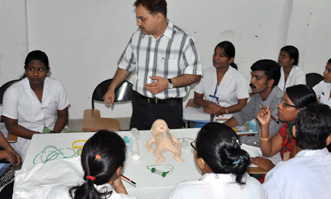
In 2006, for the first time, the number of children in the world dying before their fifth birthday fell below 10 million, to 9.7 million annually. However, South Asia’s contribution to this figure remained a staggering 3.1 million while 2.1 million under five deaths occurred in India. This means that India bears around 21 per cent of the global burden of deaths of children under five years of age (State of World’s Children 2008). Improving Child Health and Survival has been an important goal of the Family Welfare Programs in India. National Population Policy (NPP) 2000 while addressing the unmet needs for contraception, health care infrastructure, and health personnel, also aimed to provide integrated service delivery for basic reproductive and child health care. The policy sets various National Socio-Demographic Goals to be achieved and included reduction infant mortality rate to below 30 per 1000 live births. However, rate of decline of IMR over a period of time has been slowed down. During the period 1980 to 1990 IMR declined by 34 points (114 to 80), whereas during the period 1990 to 2000 annual decline rate was just 12 points (80 to 68). Further the decline in IMR has not been uniform across all States over the years.
The IMR and under 5 child mortality in some States such as Madhya Pradesh, Orissa, UP, Rajasthan, Bihar, Jharkhand, Chhattisgarh, Assam, Arunachal Pradesh and Andhra Pradesh continue to be unacceptably high(Table 1). If India is to reach the NPP goal of IMR below 30/1000 live births and MDG (Millennium Development Goal) of 38 by 2015, the average annual rate of reduction over the coming years must be far higher, or around 7.6 per cent (Source: SOWC 2008 & PFC 2007). There is no doubt that if some urgent measures are not initiated, IMR goals set by NPP and MDG would not be achievable in foreseeable future.
Why IMR continues to be high in India?
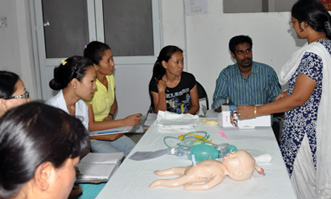
The major reason for this situation has been a very slow decline in the neonatal mortality rate. Worldwide 37 per cent of under-five deaths are attributed to neonatal causes (within the first 4 weeks of life). National Family Health Survey-3 reports that neonatal mortality accounts for 50% of under 5 deaths, which means that the proportion of U5 deaths by neonatal causes is disproportionately high in this country. (Source: PFC 2007 & SRS). Efforts have to be made to tackle this situation in a much focused manner. Each year, globally around 4 million children die in the neonatal period. . In India, this number is estimated to be around one million. (Source: PFC 2007 & SRS). At 1.1 million deaths under 4 weeks of age each year, India contributes 30% of the global burden of neonatal deaths; highest for any country. Current neonatal mortality rate in India is 36 /1000 live births accounting for almost two thirds of the infant deaths(SRS 2008). NMR shows a wide variation in different states being the lowest in Kerala with highest rates are seen in Chattishgarh, Jharkhand, UP and Madhya Pradesh . Within the neonatal period, the first week is crucial. Early neonatal deaths accounted for 80% of all neonatal deaths. Early neonatal death has, in fact, increased from 26/1000 to 29/1000 live births (SRS 2004 & 2007). Primary cause of neonatal deaths are perinatal asphyxia (23%), severe infections (36%) preterm births (25%), neonatal tetanus 4%) and congenital malformations (4%). (World Health Statistics 2007;http://www.who.int/child_adolescent_health/data/media/cah_chp_india.pdf)
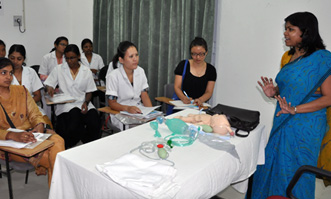
The World Health Organization (WHO) reports that between 4 and 9 million newborns have birth asphyxia, of whom an estimated 1.2 million die from birth asphyxia. The stillbirth rate varies from 5 per 1000 births in developed countries to 32 per 1000 births in south Asia and sub-Saharan Africa. In India, estimated number of stillbirths is 1 million. More than one-third of stillbirths are intrapartum and largely preventable by newborn resuscitation program. In rural Gadchiroli India interventions by the trained VHW in basic newborn resuscitation reduced case fatality in severe asphyxia by nearly 50% and asphyxia specific mortality rate by 65% in comparison to management by TBA alone (Bang et al. J Perinatology 2005; Suppl 1: S82-91). It is also, noteworthy that, about 1 million children who survive birth asphyxia each year go on to develop cerebral palsy and other disabilities.
United Nations Millennium Development Goal 4 (MDG 4) targets the reduction of under-5 child deaths by two-thirds by 2015. Given that 75% of neonatal deaths occur in the first 7 days of life, and that almost half of newborns die at home, neonatal resuscitation is a crucial component of strategies to reduce the burden of newborn deaths. It is estimated that 6-42% of neonatal mortality or morbidity in the developing countries could be decreased by neonatal resuscitation(Lancet Neonatal Survival series March 2005). In addition, WHO estimates that the number of disability-adjusted life years (DALYS) for birth asphyxia exceeds childhood conditions preventable by immunization.
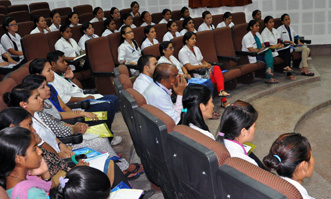
Birth asphyxia results from events in the antepartum (50%), intrapartum (40%), and postpartum (10%) periods. Given that preventive strategies can be severely hampered by a lack of specificity of determining risk factors and by the lack of qualified and skilled birth attendants, , it will be necessary to provide resuscitation in the community , and to those born in facility settings with limited resources both of equipments and trained personnel. Neonatal resuscitation has the potential of altering the outcome of intrapartum and postpartum events.
Neonatal resuscitation is an important starting-point in the scaled-up neonatal programs that are required to ensure that the world’s youngest citizens get the best possible start in life.Given the distribution of the burden of asphyxia, and the limitations of access, we must be prepared to target preventive and management strategies in various settings including Community health centers, First Referral Units ( FRUs), Primary Health Centres, District-level referral facilities,Urban referral/tertiary care centers, Nursing homes in private setup.
Neonatal Resuscitation Program (NRP)
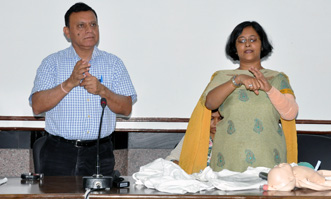
Asphyxiated neonates require prompt, skilled resuscitation to survive the neonatal period. Neonatal resuscitation is simple, inexpensive, available and cost-effective but often not initiated or the methods used are inadequate or wrong. Neonatal Resuscitation training has been widely used in the developed world but has had limited dissemination in developing countries (WHO Technical Working Group). The American Academy of Pediatrics (AAP) and American Heart Association (AHA) developed Neonatal Resuscitation Program (NRP) in 1987 to provide resuscitation training to all delivery attendants.
WHO Essential Newborn Care (ENC) sets minimum standards for training in neonatal care, including thermoregulation, resuscitation, breastfeeding, etc. Essential newborn care (ENC) became a part of the Child Survival strategy in the Child Survival and Safe Motherhood programme and continued into the RCH I programme. While neonatal resuscitation is a part of ENC training, AAP’s NRP is fully skill based program and focuses exclusively on neonatal resuscitation and believed to result in better competency of persons trained.
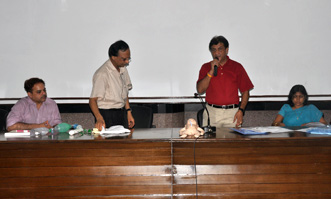
The American Heart Association/American Academy of Pediatrics Neonatal Resuscitation Program (NRP) was evaluated in Ireland, where 85% of participants had improved skills and confidence after the program. Midwives who received intensive training scored higher in the practical demonstration than those who did not receive the intensive training. A program with critical thinking skills that promotes life-long learning and knowledge is retained for a longer period of time. There is also emerging evidence from resuscitation training programs in health system settings that multi-tiered levels of staff training and provision of equipment can make a substantial difference to overall outcomes with reduction in rates of asphyxia and perinatal mortality (Z. Bhutta, unpublished observations).
A Randomized Control Trial FIRST BREATH: The Global Network’s Trial of Two methods compared the impact of two methods of resuscitation training of NMW (WHO Essential Newborn Care Program vs. ENC + the AAP’s NRP) at 8 global sites including 2 sites in India.
China is a big country like India and to disseminate the NRP throughout China, a multidisciplinary partnership was established among the Chinese Ministry of Health, Chinese Perinatal Society, Chinese Nursing Association, American Academy of Pediatrics, and Johnson and Johnson Pediatric Institute. In July 2003, a task force that consists of representatives from all partners made a 5-year commitment to set up "Freedom of Breath, Foundation of Life: China Neonatal Resuscitation Program. To date, 18 240 health care professionals have been trained, among them obstetricians, pediatricians, nurses/midwives, and anesthetists. By the end of 2006, NRP training had covered 99.1% of health care institutions in cities and 59.8% in 20 target provinces. Recently a paper was presented at PAS meeting in Honolulu (USA) to give impact of nationwide training on reduction of neonatal mortality due to Asphyxia in 10 provinces of China. Similar large scale training on NRP has been implemented in many countries including Turkey and many Latin American countries. The NRP has been used as model for similar neonatal resuscitation programs in 122 countries besides USA and China.
NRP in India
First International Course on NRP in India was conducted in 1989. National Neonatology Forum (NNF) created a national faculty of 150 pediatricians and nurses for NRP, who trained 12,000 healthcare professionals in various parts of India over the following 2 years in advanced course of NRP. But there was no follow-up or monitoring and no system of certification or retraining was in place which is an essential component of good NRP Program. Since then, the NRP has been taught sporadically in India. However for a country of the size of India with 27 million deliveries per year the program need to be upscaled substantially. To have a skilled birth attendants trained for every delivery, more than 0.25 million health professionals needed to be trained in NRP including physicians, pediatricians, obstetricians, anesthetists, nurses, midwives and other categories. It is also essential that such skilled professionals are available in a short period of time to meet the requirement of MDG4 goal and NPP. This would require massive organizational support. Isolated training efforts have had little impact on influencing a national training effort, largely due to the size of the country.
Role of Indian Academy of Pediatrics in propagating NRP
Indian Academy of Pediatrics(IAP), has an efficient network of more than 18,000 pediatricians with 26 state branches and 282 regional/district/city level branches. IAP also influences thousands of other pediatricians and medical practitioners who are not its members but who follow IAP policies. Along with Federation of Obstetrics and Gynecological Society of India (FOGSI) IAP has also established an alliance with other health care professional organizations including Indian Society of Perinatology and Reproductive Biology (ISOPARB), Indian Medical Association ( IMA) and Society of Midwives of India(SOMI),
Type of course needed
Only Basic NRP course which includes Initial steps and Bag and mask ventilation is required to be disseminated at large scale. Till now NRP courses offered were Advanced NRP including endotracheal Intubation and medication which is required only in 1% babies requiring resuscitation. .American Academy of Pediatrics ( AAP) has pledged full support to IAP. A team from AAP will visit India every year during Pedicon to support IAP on technical issues including training of trainers.
Goals and Objectives
The ultimate objective of this Project will be to have one person at every delivery trained in neonatal resuscitation. With India’s birth cohort of 27 million per year and with most of the deliveries being conducted at home, this goal will require large number of trainers in each 611 districts of India. This projects aims to train about 200,000 health personnel in 5 years in NRP including trainers and providers
Project Implementation Plan
Through this project Indian Academy of Pediatrics in partnership with American Academy of Pediatrics and Later-Day Saint Charieties ( LDSC) USA intend to embark upon an joint venture to reduce the infant mortality and morbidity rates in India through NRP education and training. IAP in partnership with American Academy of Pediatrics (AAP) and Later-day Saint Charieties (LDSC) USA with support of , Johnsons and Johnsons India will establish a collaboration consisting of Federation of Obstretics and Gynec Societies of India (FOGSI ), Indian Medical Association, Indian Society of Perinatology and Reproductive Biology ( ISOPARB), SOMI and , Trained Nurses Association of India ( TNAI) to train >200,000 health professionals /workers in next 5 years starting from year 2009.
IAP’s National Task Force has been formed to implement and supervise the Program. A Steering Committee and Core Committee has been formed. Co ordinarors at regional level and state level is also in place. A modified NRP curriculum is being used for training of District Instructors based on NSSK manual. A nationwide media campaign will also be launched to create this awareness. It is also proposed to do advocacy to include NRP in pre-service training of medical and nursing training.
Monitoring & Evaluation Plan
A international level steering committee will be set up to monitor and evaluate Program on ongoing basis.
Process level evaluation will be carried out by assessing:
- Pre and Post test evaluation of participants
- % of health professionals trained
- % of institutions covered by NRP
- % of delivery attended by NRP trained persons
- % of positive feedback from trainees
- Publications
- Paper presentation in Scientific Conferences
Outcome level evaluation will be carried out by assessing:
- Reduction in early neonatal mortality
- Reduction in mortality due to Asphyxia, HIE,
- Need for advanced Resuscitation , improvement in 5 min Apgar score
Sustainability
Through this project we propose to develop an efficient, cost effective and sustainable system for on-going training and monitoring of Neonatal Resuscitation Program in India. With 27 million births every year it is important to have a good neonatal resuscitation program which can fulfill needs of large scale training and periodic re-training and continuous evaluation with emphasis on quality control.
IAP is already working with Ministry of Health and Family Welfare for Navajaat Shishu Suraksha Karykram (Basic Newborn Care and Resuscitation Program) and created a pool of about 2000 District level trainers in Public sector and provider courses have been initiated in many states. By working with other partners of NRP collaboration we will develop, refine and implement a system that takes care of these needs. These systems, along with the information we will collect on their relative efficiency, will be a key resource for improving neonatal resuscitation practices in India. This program through network of dedicated Regional trainers and District Instructors plan to put a sustainable Neonatal Resuscitation Program in place.
For More Details Click Here